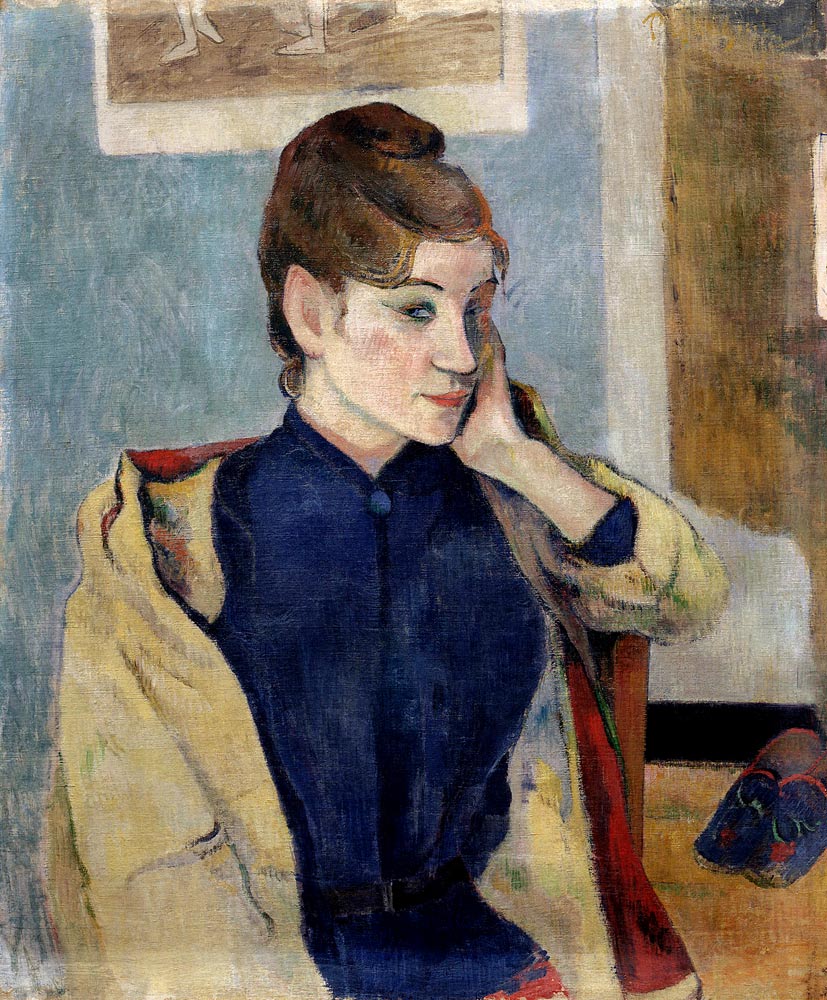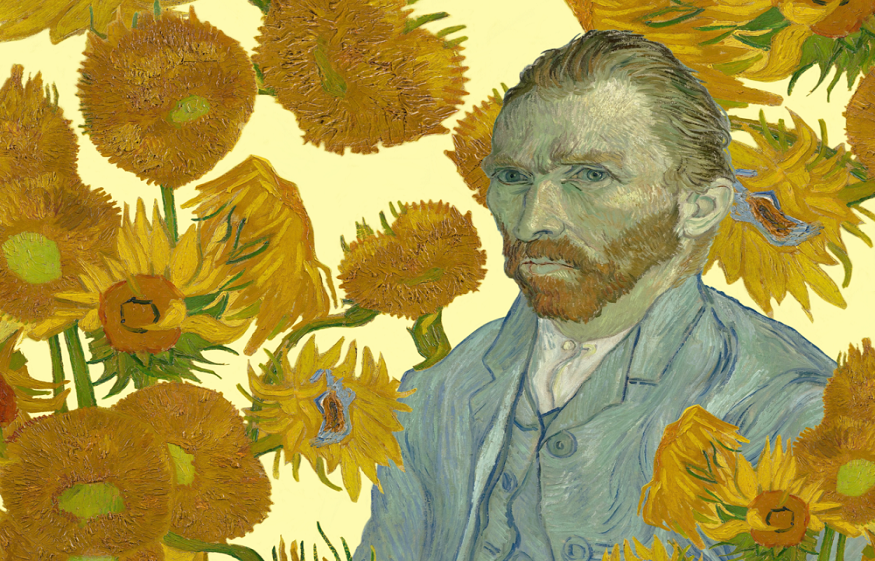A good piece of art stays in our hearts forever. Sometimes, it’s because of the feeling a painting arouses in the viewer and the beautiful imagery it employs. Sometimes it’s because of the artist and his/her artistic journey that grips your attention. Usually when a piece of art, or a particular artist keeps appearing again and again in the pages of history, it stays with us for longer. Maybe that’s why we remember one artist more than the other—through the force of retention.
Here are 9 famous artists who took the world by a storm by creating pieces of art that made us stand on our toes and take notice of their message with each canvas. These masters of art made use of art to break the barriers of language and conventions by speaking directly to our souls.
1.Vincent Van Gogh
Pick any Vincent Van Gogh painting and you’ll be struck by his ability to bring seemingly simple and inanimate objects to life—be it a chair or a vase brimming with sunflowers. Vincent Van Gogh artworks are famous across the globe and even counted amongst the most expensive paintings in the world. While he is one of the most narcissistic artists with a large number of self-portraits to his credit, it would be unfair to reduce his artistry to this. In a short artistic career spanning across a decade, 2000 Vincent Van Gogh artworks were created, including 900 paintings and 1100 sketches and drawings. Interestingly, most of the popular Van Gogh Paintings were created in the last two years of his life. Anybody studying a Van Gogh painting closely would notice that the Dutch painter was a proponent of Expressionism and Post-Impressionism.
2. Edvard Munch
He is often regarded as the father of Expressionism for his intense representation of psychological themes. Hence, an Edvard Munch painting is characterized by strong colours and intense emotional expression. While the unorthodox symbolism and intense emotional expression of Edvard Munch artworks often created controversies, the artist never retreated from his ideas and principles. You may have come across one of Edvard Munch most famous paintings, The Scream, through history books or social media. The Scream (1893) is one of the most well knownEdvard Munch artworks that has become symbolic of the modern world’s anguish and desolation. It shows a sexless and deeply contorted face screaming in horror. The Munch Scream painting became one of the world’s most expensive paintings and even inspired the modern-day scream emoji!
3. Paul Gauguin

Paul Gauguin art is world-renowned for its ‘primitive’ artistic expression. This French painter and sculptor was one of the most popular Post-Impressionist artists. However, he worked as a stockbroker and even spent time in the merchant marine before finding happiness and fame in the world of art. One of the most expensive paintings in the world is a Paul Gauguin famous painting—NafeaFaaIpoipo(When Will You Marry). It became the world’s third most expensive painting as it was sold for a staggering $210 million. Gauguin art is marked by the artist’s use of Synthetism and Symbolism. The iconic genre of Gauguin landscape paintings found its footing during his stay in Arles with Vincent Van Gogh. This shaped up famous Gauguin art like Landscape near Arles and Old Women of Arles.
4. Michelangelo
You may have heard the name Michelangelo di Lodovico Buonarroti Simoni in connection with the beauty of the Sistine Chapel. However, he was primarily a sculptor. His work became so impactful that he’s often looked upon as the face of the Renaissance movement. In fact, his contemporaries believed that he had the ability to instil a sense of awe into the viewer through his works. The 15th century Italian poet, painter, architect and sculptor is also one of the most well-documented artists of his time. He had two published biographies during his lifetime that spoke, in detail, about his life and works. Some of his most famous artworks include David, Pieta, Bacchus and The Creation of Adam, etc.
5. Georges Pierres Seurat
Georges Pierre Seurat came from a family of sculptors and created some of the most iconic pieces of art this world has seen. A close look at any Seurat painting will reveal that the artist was greatly influenced by ‘The Grammar of Painting and Engraving’ by Charles Blanc. Seurat art carved the path for novel concepts like Divisionism and Pointillism by replacing regular brushstrokes with small coloured dots. Seurat’s famous painting, A Sunday Afternoon on the Island of La Grande Jatte (1884) is a great example of this. Georges Seurat artworks like Bathers at Asnières(1884) and The Eiffel Tower (1889) became a case study for these new techniques.
6. Jackson Pollock
The creator of, not one but, two of the world’s top 10 most expensive paintings, Jackson Pollock had his own unique style of art. In fact, Number 5 was the most expensive painting in the world until 2011. Known for his drip technique, Pollock had an intimate knowledge of fluid dynamics which helped him create the, now iconic, artworks. Thanks to this novel technique, Pollock also earned the moniker of ‘Jack the Dripper’. A Jackson Pollock painting was made with the most unlikely of ingredients and instruments—turkey basters, syringes, etc. His technique involved making the paint drip from sticks, syringes, hardened brushes and turkey basters to create the desired effect.
7. Henri Rousseau
Henri Rousseau didn’t have the best start in the world of art. He dropped out of secondary school, lacked any formal training in art and his early career included years of military service. Since he hadn’t always been a part of art circles, a Henri Rousseau painting didn’t grab as much attention as it deserved. Henri Rousseau artworks were often criticized for being naive and primitive but these are the very characteristics that distinguished him from other artists. He heralded the avant-garde art movement and was an inspiration to many budding artists who actively followed Henri Rousseau style of art. Henri Rousseau jungle paintings like Tiger in a Tropical Storm (1891) are, till date, remembered for their abstract depiction of humans, flora and fauna.
8. KamisakaSekka
The genre of KamisakaSekka art is heavily embedded in the Rinpa school of art. He was born to a Samurai family in Japan and trained thoroughly in this style of art. His extensive travels in the west greatly shaped many KamisakaSekka famous paintings. They exposed him to the new, up and coming western art forms and artistic movements, which eventually found their way onto the canvas of KamisakaSekka artworks. Once he returned to Japan, he strived to revive the Rinpa school by heralding a renaissance of sorts. This transformed Japanese art by blending tradition and modernity for a contemporary audience. Momoyagusa (A World of Things) is one of the most famous series of KamisakaSekka art.
9. H. Lyman Sayen
The beauty of H. Lyman Saÿen’s art lies in his ability to blend science and art wonderfully. He is best known for patenting a design for X-ray tubes and bringing about a major change in the medical industry. H. Lyman Sayen paintings show an affinity towards Fauvism and Cubism. H. Lyman Sayen art had its biggest breakthrough in 1903 when he was commissioned to make four lunettes in the capitol building. One can find these H. Lyman Sayen artworks in room H-143, which is currently used by the House Committee of Appropriations. The form of H. Lyman Sayen painting flourished beautifully amidst the avantgarde art movement in Paris. Trees (1912-1914), is a remarkable H. Lyman Sayen painting from his Paris days.

